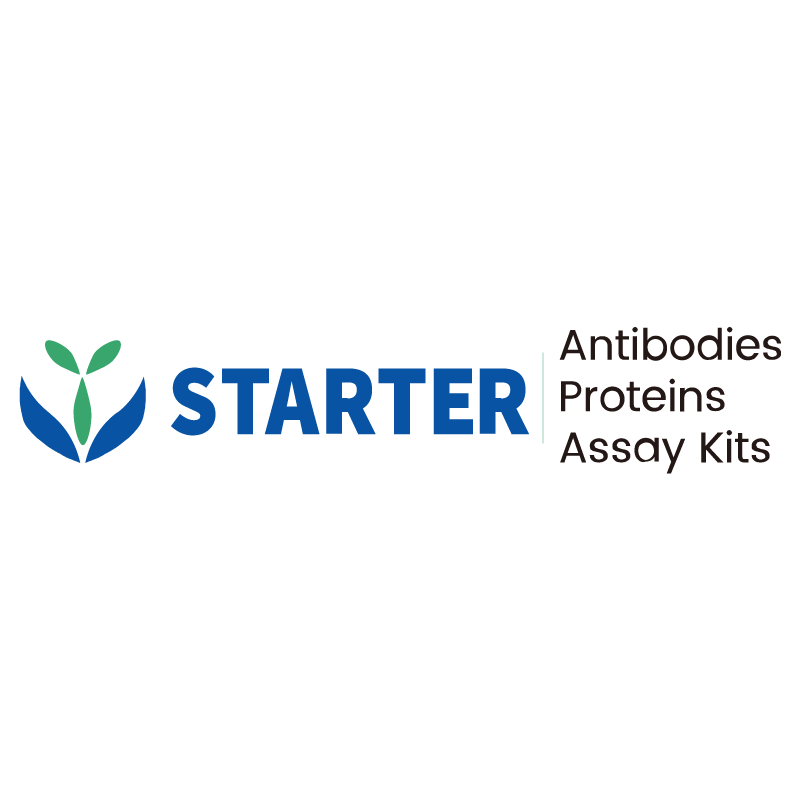WB result of CAD/BM1 Recombinant Rabbit mAb
Primary antibody: CAD/BM1 Recombinant Rabbit mAb at 1/1000 dilution
Lane 1: HEK-293 whole cell lysate 20 µg
Lane 2: PC-3 whole cell lysate 20 µg
Lane 3: HeLa whole cell lysate 20 µg
Lane 4: SW620 whole cell lysate 20 µg
Secondary antibody: Goat Anti-rabbit IgG, (H+L), HRP conjugated at 1/10000 dilution
Predicted MW: 243 kDa
Observed MW: 260 kDa
Product Details
Product Details
Product Specification
| Host | Rabbit |
| Antigen | CAD/BM1 |
| Synonyms | Multifunctional protein CAD; Carbamoyl phosphate synthetase 2-aspartate transcarbamylase-dihydroorotase |
| Immunogen | Synthetic Peptide |
| Location | Cytoplasm, Nucleus |
| Accession | P27708 |
| Clone Number | S-1650-21 |
| Antibody Type | Recombinant mAb |
| Isotype | IgG |
| Application | WB, IHC-P, ICC, FCM |
| Reactivity | Hu, Ms, Rt |
| Positive Sample | HEK-293, PC-3, HeLa, SW620, C2C12, C6 |
| Purification | Protein A |
| Concentration | 0.5 mg/ml |
| Conjugation | Unconjugated |
| Physical Appearance | Liquid |
| Storage Buffer | PBS, 40% Glycerol, 0.05% BSA, 0.03% Proclin 300 |
| Stability & Storage | 12 months from date of receipt / reconstitution, -20 °C as supplied |
Dilution
| application | dilution | species |
| WB | 1:1000 | Hu, Ms, Rt |
| IHC-P | 1:200 | Hu, Ms, Rt |
| ICC | 1:500 | Hu, Ms, Rt |
| FCM | 1:500 |
Background
The CAD protein, also known as carbamoyl phosphate synthetase II, is a multifunctional enzyme that plays a crucial role in the initiation of de novo pyrimidine biosynthesis in mammalian cells. It is a key regulatory enzyme involved in the synthesis of pyrimidines, which are essential components of nucleic acids. The CAD protein is composed of multiple domains that catalyze the first three steps of pyrimidine synthesis: carbamoyl phosphate synthesis, dihydroorotase, and aspartate transcarbamoylase activities. The allosteric regulation of CAD modulates de novo pyrimidine synthesis during the cell cycle, and its activity is influenced by various effectors and subunit interactions. Moreover, the CAD protein has been implicated in coronary artery disease (CAD) through the integration of GWAS data and human plasma proteomes.
Picture
Picture
Western Blot
WB result of CAD/BM1 Recombinant Rabbit mAb
Primary antibody: CAD/BM1 Recombinant Rabbit mAb at 1/1000 dilution
Lane 1: C2C12 whole cell lysate 20 µg
Secondary antibody: Goat Anti-rabbit IgG, (H+L), HRP conjugated at 1/10000 dilution
Predicted MW: 243 kDa
Observed MW: 260 kDa
WB result of CAD/BM1 Recombinant Rabbit mAb
Primary antibody: CAD/BM1 Recombinant Rabbit mAb at 1/1000 dilution
Lane 1: C6 whole cell lysate 20 µg
Secondary antibody: Goat Anti-rabbit IgG, (H+L), HRP conjugated at 1/10000 dilution
Predicted MW: 243 kDa
Observed MW: 260 kDa
FC
Flow cytometric analysis of 4% PFA fixed 90% methanol permeabilized HeLa (Human cervix adenocarcinoma epithelial cell) labelling CAD/BM1 antibody at 1/500 dilution (0.1 μg)/ (Red) compared with a Rabbit monoclonal IgG (Black) isotype control and an unlabelled control (cells without incubation with primary antibody and secondary antibody) (Blue). Goat Anti - Rabbit IgG Alexa Fluor® 488 was used as the secondary antibody.
Immunohistochemistry
IHC shows positive staining in paraffin-embedded human breast cancer. Anti-CAD/BM1 antibody was used at 1/200 dilution, followed by a HRP Polymer for Mouse & Rabbit IgG (ready to use). Counterstained with hematoxylin. Heat mediated antigen retrieval with Tris/EDTA buffer pH9.0 was performed before commencing with IHC staining protocol.
IHC shows positive staining in paraffin-embedded mouse liver. Anti-CAD/BM1 antibody was used at 1/200 dilution, followed by a HRP Polymer for Mouse & Rabbit IgG (ready to use). Counterstained with hematoxylin. Heat mediated antigen retrieval with Tris/EDTA buffer pH9.0 was performed before commencing with IHC staining protocol.
Immunocytochemistry
ICC shows positive staining in HeLa cells. Anti-CAD/BM1 antibody was used at 1/500 dilution (Green) and incubated overnight at 4°C. Goat polyclonal Antibody to Rabbit IgG - H&L (Alexa Fluor® 488) was used as secondary antibody at 1/1000 dilution. The cells were fixed with 4% PFA and permeabilized with 0.1% PBS-Triton X-100. Nuclei were counterstained with DAPI (Blue). Counterstain with tubulin (Red).


